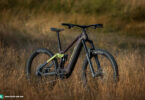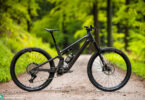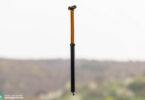How much fun can you have on an E-MTB? The new Rocky Mountain Altitude Powerplay Carbon wants to redefine the trail benchmark with a proprietary motor and unique technical solutions. We’ve tested the new bike in Southern France to find out whether the Canadian brand have managed to achieve maximum trail performance with their debut to E-MTBs.
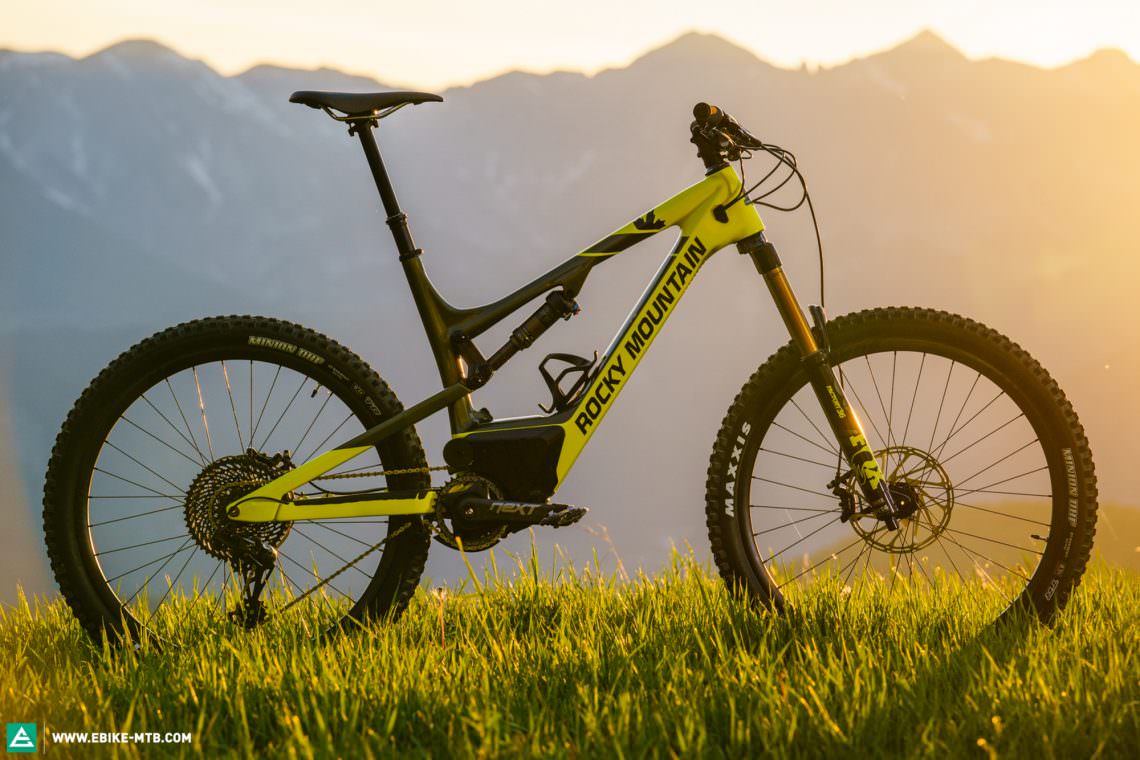
The Rocky Mountain Altitude Powerplay Carbon is a real eye-catcher, a balance of aggressive lines and refined curves it immediately grabbed our attention. The aforementioned motor is mounted low within the muscular carbon frame, with an integrated battery that delivers 500 or 632 W capacity, depending on the model. Rocky Mountain’s designers have managed to keep the downtube slim, delivering an elegant silhouette and leaving enough space for a bottle mount. The system is controlled via a compact remote on the bars that indicates the current battery status and support level through a number of LEDs – there’s no display on the Rocky. The bottom bracket houses a standard Race Face crankset, the motor is mounted in front of the bottom bracket driving the chain through a pulley wheel.
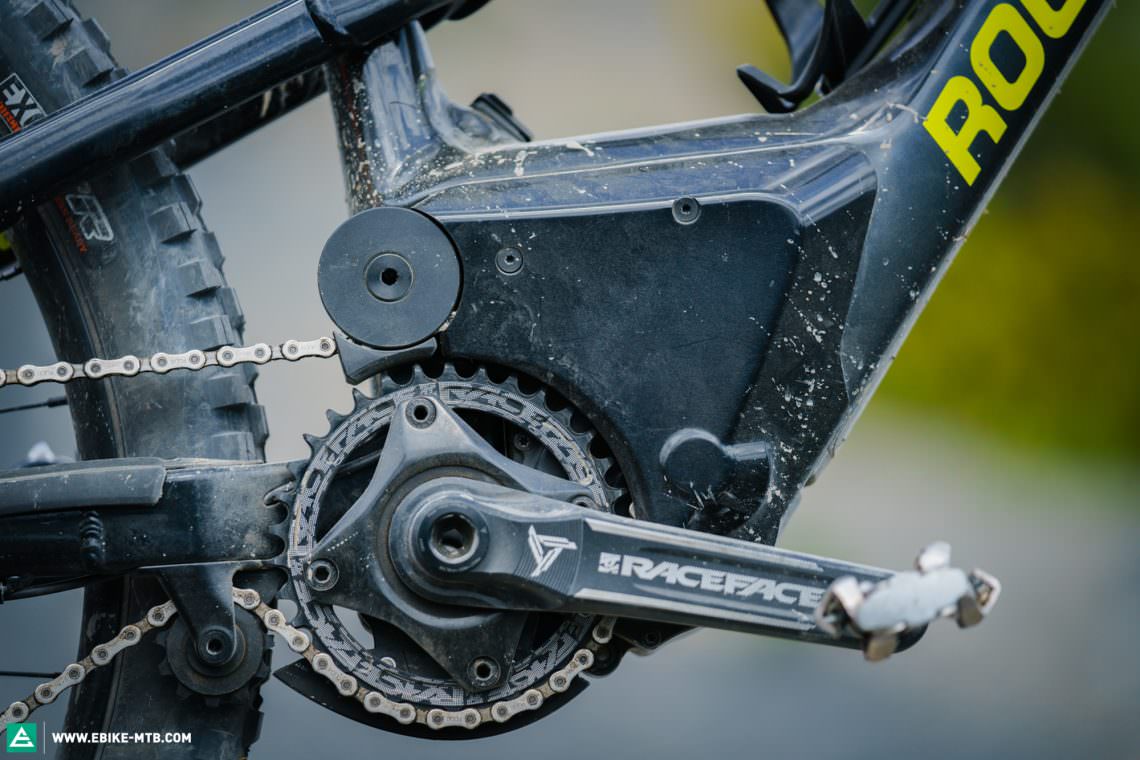
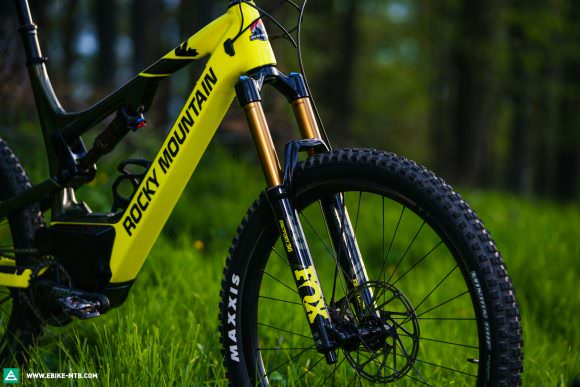
The Geometry of the Rocky Mountain Altitude Powerplay
The unique drivetrain concept enabled Rocky Mountain to keep the chainstays extremely compact, just 423–426 mm (depending on the RIDE-9 setting), making them the shortest in the market. The seated riding position feels very balanced and should be well known to Rocky Mountain fans as the geometry is an exact duplicate of the current non-electric Altitude. The bike offers 150 mm of rear travel and comes specced with a 160 mm fork up front. The RIDE-9 system allows riders to customise both the progression of the rear suspension and the geometry, offering a wide range of tuning options for those who like to experiment.

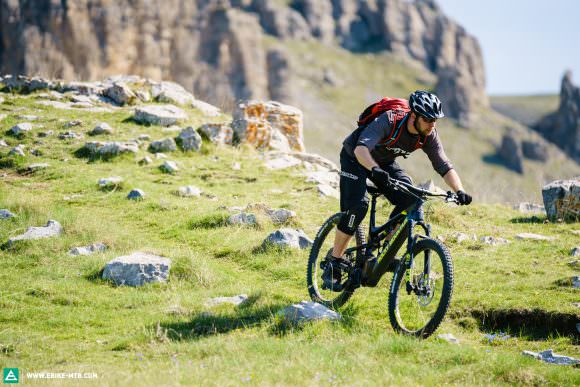
| Size | S | M | L | XL | ||||||||
|---|---|---|---|---|---|---|---|---|---|---|---|---|
| Slack | Neutral | Steep | Slack | Neutral | Steep | Slack | Neutral | Steep | Slack | Neutral | Steep | |
| Seat Tube | 419 | 419 | 419 | 457 | 457 | 457 | 483 | 483 | 483 | 521 | 521 | 521 |
| Top Tube | 578 | 576 | 575 | 603 | 601 | 600 | 628 | 626 | 625 | 658 | 656 | 655 |
| Head Tube | 100 | 100 | 100 | 120 | 120 | 120 | 130 | 130 | 130 | 145 | 145 | 145 |
| Head Angle | 64.5° | 65.0° | 65.6° | 65.0° | 65.6° | 66.1° | 65.0° | 65.6° | 66.1° | 65.1° | 65.6° | 66.1° |
| Seat Angle | 74.0° | 74.5° | 75.1° | 74.0° | 74.6° | 75.1° | 74.0° | 74.6° | 75.1° | 74.1° | 74.6° | 75.1° |
| Chainstays | 426 | 425 | 423 | 426 | 425 | 423 | 426 | 425 | 423 | 426 | 425 | 423 |
| BB Drop | 14 | 7 | 1 | 14 | 7 | 1 | 14 | 7 | 1 | 14 | 7 | 1 |
| Wheelbase | 1157 | 1156 | 1155 | 1180 | 1179 | 1177 | 1206 | 1205 | 1204 | 1239 | 1238 | 1236 |
| Reach | 411 | 416 | 422 | 430 | 435 | 441 | 452 | 458 | 464 | 479 | 484 | 490 |
| Stack | 583 | 579 | 575 | 604 | 600 | 596 | 614 | 610 | 605 | 628 | 623 | 619 |
The Specifications of the Rocky Mountain Altitude Powerplay Carbon
All three build kits are ready for some proper off-road abuse, we had the chance to test ride the mid-priced Altitude Powerplay Carbon 70. The builds share several parts in common, all relying on SRAM’s EX1 drivetrain, SRAM Guide RE brakes and the excellent MAXXIS Minion DHF Wide Trail tires in 2.5″. Our test bike was equipped with FOX suspension, featuring a 36 FLOAT EVOL Grip Performance fork up front and a FLOAT DPS EVOL Performance Elite shock in the rear. The kit is rounded off with a FOX Transfer dropper post and some well chosen Race Face parts.
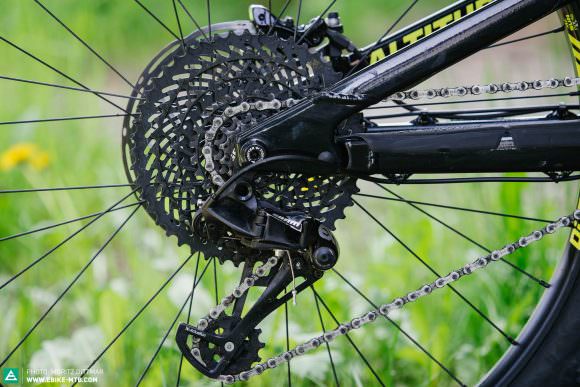
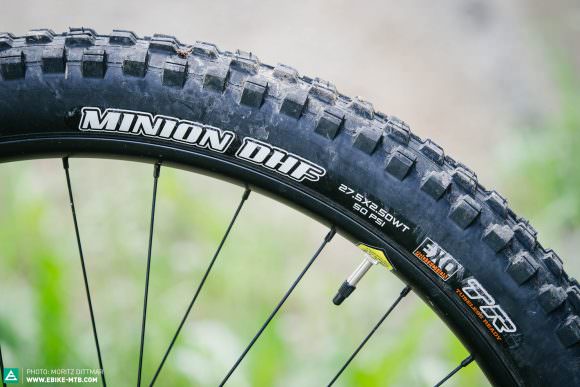
Rocky Mountain Altitude Powerplay Carbon 90
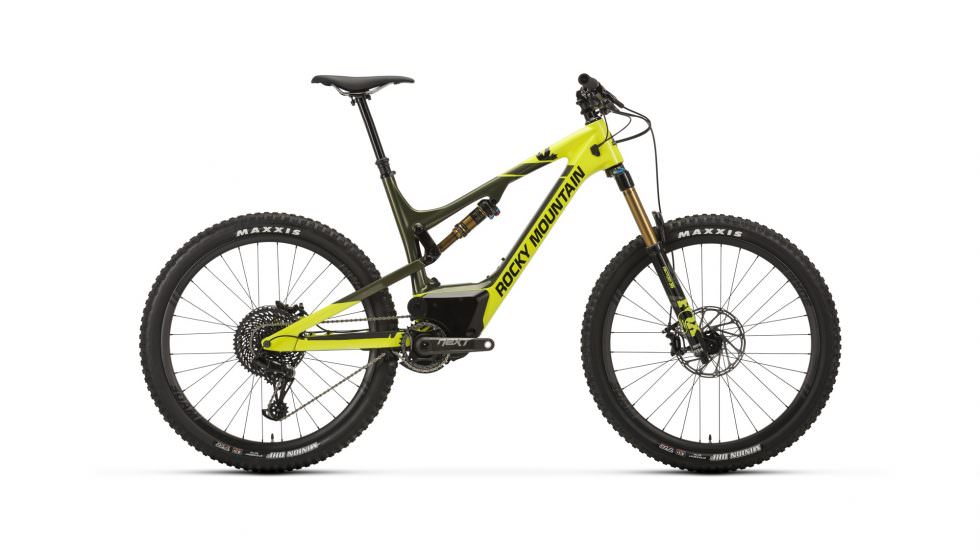
Fork FOX 36 Float Factory 160 mm
Shock FOX Float Factory DPS 150 mm
Motor/Battery Powerplay Drive 250 W / 632 Wh
Brakes SRAM Guide RE 200 mm/200 mm
Drivetrain SRAM EX1
Seatpost FOX Transfer Performance Elite
Stem Rocky Mountain
Bars Race Face Next R 780 mm
Tires MAXXIS Minion DHF 2.5″
Hubs/Rims Rocky Mountain Sealed Boost (front), DT Swiss 350 Boost (rear)/Rocky Mountain 30AM Carbon
Weight 21.6 kg (in M, manufacturer information)
Price € 9,700
Rocky Mountain Altitude Powerplay Carbon 70

Fork FOX 36 Performance Grip 160 mm
Shock FOX Float Performance Elite DPS 150 mm
Motor/Battery Powerplay Drive 250 W / 632 Wh
Brakes SRAM Guide RE 200 mm/200 mm
Drivetrain SRAM EX1
Seatpost FOX Transfer Performance Elite
Stem Rocky Mountain
Bars Race Face Chester 780 mm
Tires MAXXIS Minion DHF 2,5″
Hubs/Rims Rocky Mountain Sealed Boost (vorne), DT Swiss 350 Boost (hinten)/Sun Düroc 40
Weight 22,3 kg (in M, manufacturer information)
Price € 7,000
Rocky Mountain Altitude Powerplay Carbon 50
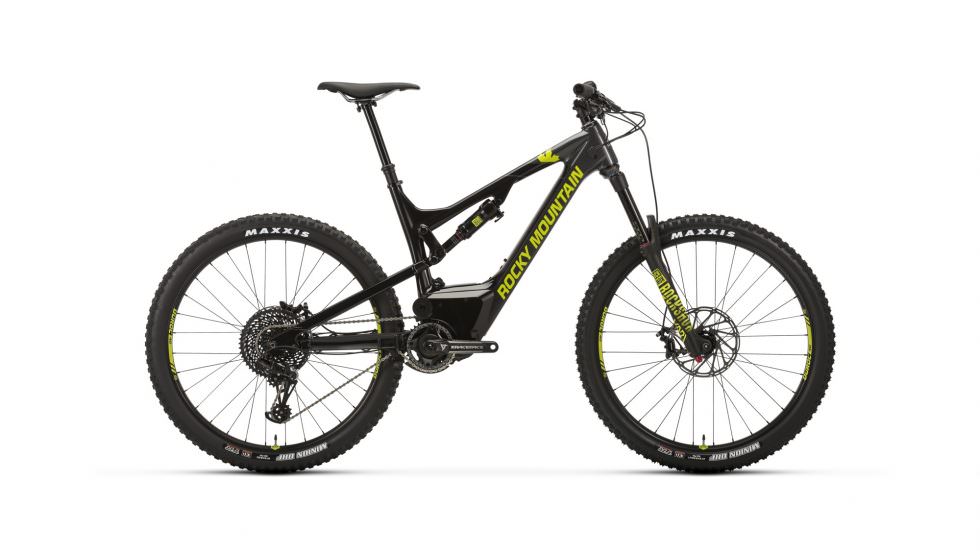
Fork RockShox Yari RC 160 mm
Shock RockShox Super Deluxe RT 150 mm
Motor/Battery Powerplay Drive 250 W / 500 Wh
Brakes SRAM Guide RE 200 mm/200 mm
Drivetrain SRAM EX1
Seatpost Race Face Aeffect Dropper
Stem Rocky Mountain
Bars Race Face Next R 780 mm
Tires MAXXIS Minion DHF 2.5″
Hubs/Rims Rocky Mountain Sealed Boost (vorne), SRAM MTH 746 Boost (hinten)/Rocky Mountain 30AM Carbon
Weight 22.3 kg (in M, manufacturer information)
Price € 6,000
Riding the Rocky Mountain Altitude Powerplay Carbon 70
It takes just a few pedal strokes to get used to the unique feeling of the drive unit. The motor delivers its power very naturally and it’s easy to modulate in all three drive modes. The level of support can be adjusted through a smartphone app that offers tonnes of other features too. We found the stock settings to deliver a nice balance out of the box, with all three assist levels being usable in different riding situations. The feel on the pedals takes some getting used to, the extra pulleys do not feel as smooth as a conventional drive, especially in the lower gears. The design also generates a very distinctive noise, not comparable to any of the existing systems. While the motor itself is extremely quiet, the pulleys generate a rattling chain noise. We were also a little dissapointed with the remote control, it serves its purpose well, but at this price point, we would have expected a higher quality solution.
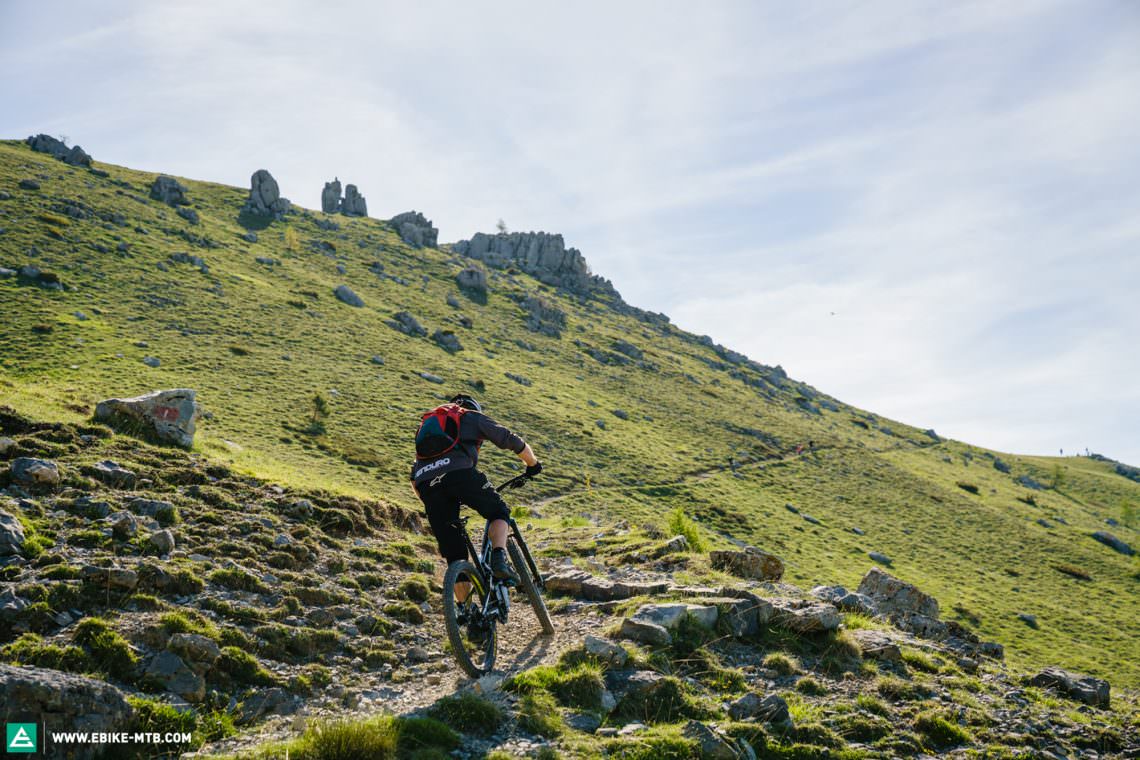
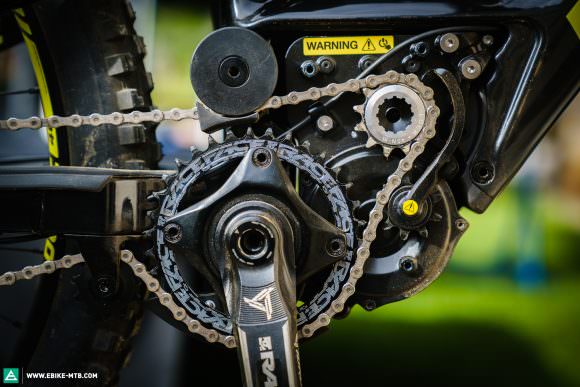
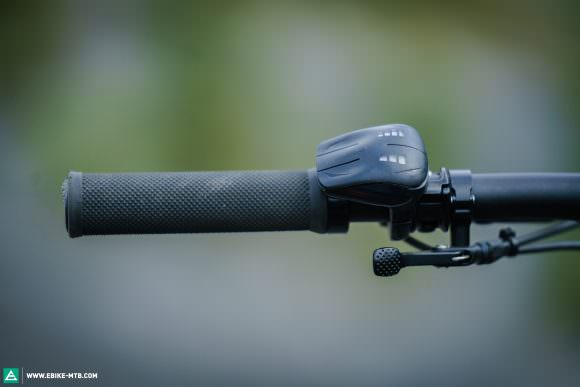
As soon as you hit the trail on the Altitude, all those small issues are quickly forgotten. The geometry is based on modern trail and enduro bikes and that shows – the Altitude feels right at home in rough terrain. The bike climbs eagerly and is easy to manoeuvre over steps and obstacles. The motor delivers its maximum power at around 75 rpm, but also works well at other cadences, constantly driving the bike forwards in an unobtrusive manner. The maximum power output is en par with the best systems out there and the motor gives the rider great control over the power delivery. As opposed to some other systems, these characteristics make all support modes very usable for offroad riding and we enjoyed using the highest mode without feeling overpowered by the motor.
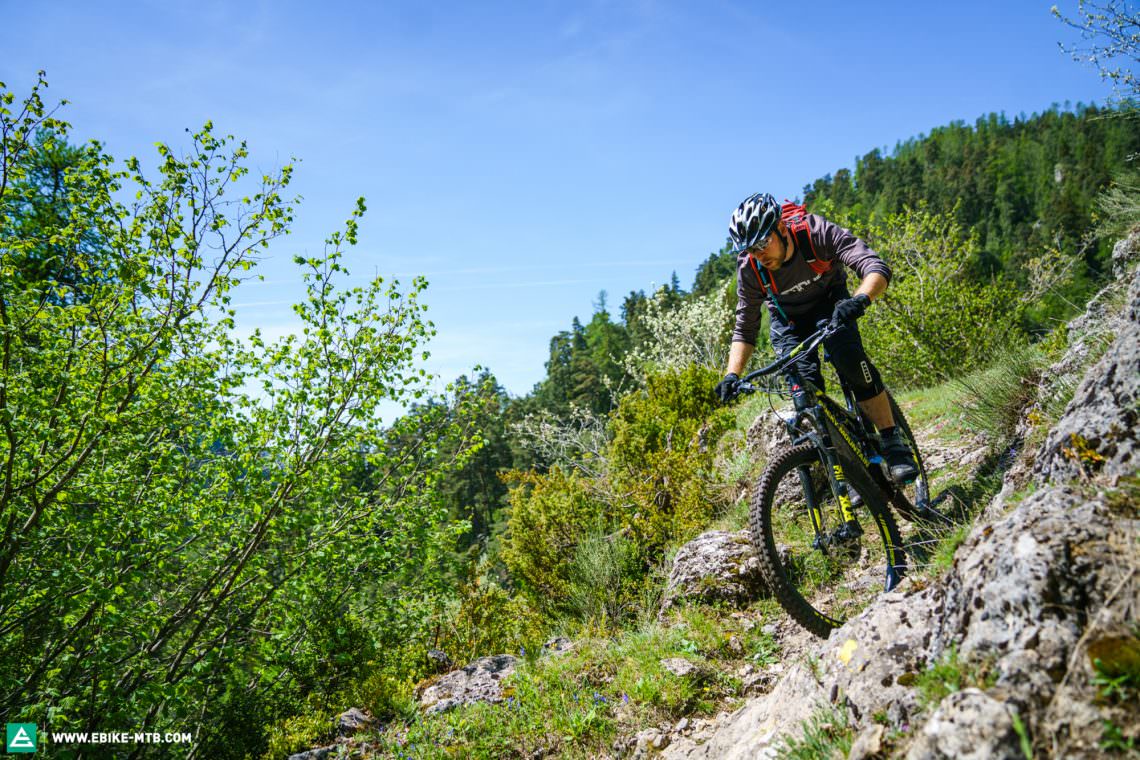
Every climb is followed by a descent and the Altitude fully comes to life once the trail points downwards. Rocky Mountain has managed to achieve a riding feel that is closer to a non-motorised mountain bike than most other manufacturers. It’s easy to pop up the front wheel and throw some playful shapes, tight turns and quick changes of direction are no problem. The Altitude feels very stable at higher speeds and is not easily flustered. The low centre of gravity and wisely specced componentry certainly plays a role here, with the powerful Guide RE brakes and the grippy 2.5″ Wide Trail tires generating huge amounts of confidence and control. The Altitude Powerplay proves that modern mountain bike geometry works just as well on an E-MTB, delivering a great handling package.
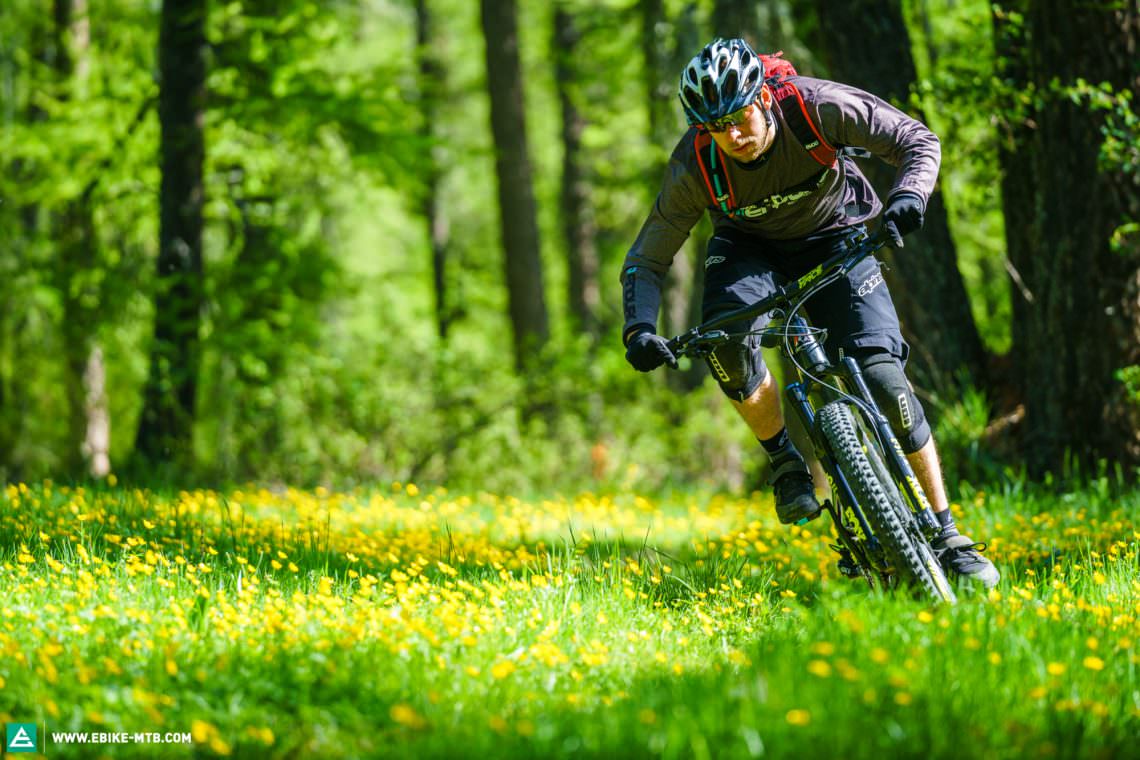
Conclusion
The Rocky Mountain Altitude Powerplay Carbon is a unique E-MTB with a character that truly shines in challenging terrain. The trail performance is exceptional and caters to the more advanced mountain bikers. The new Powerplay motor will have to prove itself against the established competition over a longer test period, but we salute Rocky Mountain for the decision to develop their own drive unit that opens up new possibilities in terms of geometry and integration.
The Rocky Mountain Altitude Powerplay will be available in limited quantities in select European countries from June. More information on the Rocky Mountain Website.

Did you enjoy this article? If so, we would be stoked if you decide to support us with a monthly contribution. By becoming a supporter of E-MOUNTAINBIKE, you will help secure a sustainable future for high-quality cycling journalism. Click here to learn more.
Words: Photos: Matt Wragg, Moritz Dittmar




